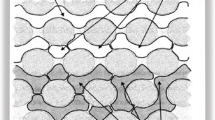Abstract
Wet air oxidation is an effective method to deal with highly concentrated nondegradable emulsification wastewater which contains non-ionic surfactants. This article illustrates our investigation on dynamic characteristics of wet air oxidation of typical non-ionic surfactants like polyether, phenol ether and widely used alcohol ether. The experimental results indicated that the oxidation rate of polyether, phenol ether and alcohol ether obviously ascended as the temperature rose. A good oxidation effect was available at 240°C. The TOC removal rate could reach 88.0%, 94% and 91.5%, after 125 min reaction. Alcohol ether was prone to an easier oxidation compared with polyether and phenol ether when the temperature was 220°C or below. The oxidation rate of alcohol ether was higher than that of polyether at 160°C, while the oxidation rate of polyether was higher than that of phenol ether between 180°C and 220°C. During the later period of the reaction at 240°C, the rate of phenol ether was higher than that of alcohol ether, which was still higher than that of polyether. Partitioned first order kinetics model analysis showed that the apparent activation energy of alcohol ether was lower than that of both polyether and phenol ether in the leading stage and lagging stage, and it was easy to acquire a higher oxidation rate for alcohol ether at low temperature. Three parameter general dynamics model analyses showed that the reason why the oxidation rate of polyether was lower than that of alcohol ether was that the oxidation of polyether was more apt to be converted to intermediate production than that of alcohol ether, whereas between 200°C and 220°C, the direct oxidation rate of polyether and the oxidation rate of intermediate product were obviously lower than that of alcohol ether. The apparent activation energy of direct and indirect oxidation of polyether was 43.37 and 60.45 kJ·mol−1, respectively, while the corresponding apparent activation energy of alcohol was 38.74 and 58.09 kJ·mol−1, respectively.
Similar content being viewed by others
References
Zeng X P, Tang W W, Zhao J F, Gu G W. Dynamics characteristic of homogenous catalytic wet air oxidation of emulsification wastewater. Environ Sci (in Chinese), 2006, 27(3): 448–451
Tang W W, Zeng X P, Hu Z H. Study of Fenton’s reagent and wet hydrogen peroxide oxidation for treatment of emulsified wastewater. Acta Sci Circumstant (in Chinese), 2006, 26(8): 1265–1270
Tang W W, Zeng X P, Zhao J F, Gu G W. The study on the wet air oxidation of highly concentrated emulsified wastewater and its kinetics. Sep Purif Technol, 2003 31: 77–82
Tang W W, Zeng X P, Gu G W. Study on treatment of SBR after wet air oxidation of emulsification wastewater. Environ Sci (in Chinese), 2007, 28(9): 1993–1997
Mishra V S, Mahajani V V, Joshi J B. Wet air oxidation. Ind Eng Chem Res, 1995, 34: 2–48
Imamura S. Catalytic and noncatalytic wet oxidation. Ind Eng Chem Res, 1999, 38: 1743–1753
Bhargava S K, Tardio J, Prasad J, Foger K, Akolekar D B, Grocott S C. Wet oxidation and catalytic wet oxidation. Ind Eng Chem Res, 2006, 45: 1221–1258
Dai Q Z, Zhou M H, Lei L C, Zhang X W. A novel advanced oxidation process—Wet electro catalytic oxidation for high concentrated organic wastewater treatment. Chin Sci Bull, 2007, 52: 1724–1727
Lin S H, Chuang T S. Wet air oxidation and activated sludge treat—ment of phenolic wastewater. J Environ Sci Health, 1994, A29: 547–564
Lin S H. Kinetic and performance characteristics of wet air oxidation of high-concentration wastewater. Ind Eng Chem Res, 1996, 35(1):307–314
Li L. Generalized kinetic model for wet oxidation of organic compounds. AIChE J, 1991, 37(11): 1687–1697
Author information
Authors and Affiliations
Corresponding author
Rights and permissions
About this article
Cite this article
Zeng, X., Tang, W., Zhao, J. et al. Study on dynamics characteristics of wet air oxidation of non-ionic surfactants. Sci. China Ser. B-Chem. 51, 993–999 (2008). https://doi.org/10.1007/s11426-008-0102-8
Received:
Accepted:
Published:
Issue Date:
DOI: https://doi.org/10.1007/s11426-008-0102-8




